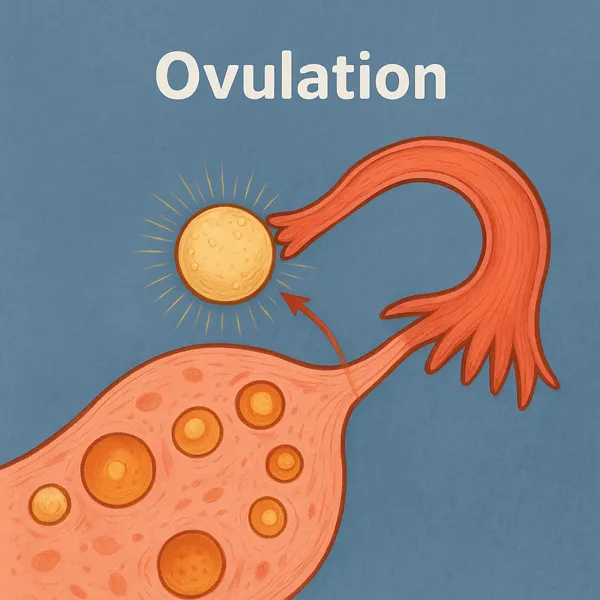Ovulation? A Step-by-Step explanation

You may have heard the word “ovulation” before — especially when people talk about periods, fertility, or pregnancy. But what exactly is ovulation? And why is it important?
Let’s break it down simply and clearly — step by step.
Step 1: Understanding the Menstrual Cycle
Before we dive into ovulation, let’s understand the menstrual cycle a little.
A menstrual cycle is the time from the first day of your period to the day before your next period starts.
It usually lasts about 28 days, but it can be shorter or longer (21 to 35 days) — and that’s okay!
During this cycle, your body goes through changes to prepare for a possible pregnancy.
Ovulation is one of the most important parts of this cycle.
Step 2: What Is Ovulation?
Ovulation is when your body releases a mature egg (also called an ovum) from one of your ovaries.
You have two ovaries (left and right), and they take turns releasing an egg each month.
This egg travels down a tiny tube called the fallopian tube, where it waits to meet a sperm.
If a sperm meets the egg, fertilization can happen, and pregnancy may begin.
If the egg isn’t fertilized, it breaks down — and your period comes about 14 days later.
Ovulation is the time in your cycle when you are most likely to get pregnant.
Step 3: When Does Ovulation Happen?
Ovulation usually happens around day 14 of a 28-day cycle (counting from the first day of your period).
But everyone’s cycle is different — some people ovulate earlier or later.
Ovulation can be affected by stress, illness, diet, or irregular cycles.
You are most fertile (most likely to get pregnant) about 5 days before ovulation and on the day of ovulation. This is called the fertile window.
Step 4: How Do You Know You're Ovulating?
Some people notice signs when they ovulate. Here are a few common ovulation symptoms:
Mild cramping or pain on one side of the lower belly (called mittelschmerz)
Clear, stretchy discharge (like raw egg whites)
Slight increase in body temperature
Increased sense of smell, taste, or mood changes
Feeling more energetic or having a higher sex drive
Not everyone feels or notices ovulation — and that’s totally normal too.
Step 5: What Happens After Ovulation?
After the egg is released:
Your body produces a hormone called progesterone.
If no sperm fertilizes the egg, hormone levels drop.
The uterus lining (which had thickened to prepare for a baby) is no longer needed — so it breaks down and sheds.
This shedding becomes your period.
If the egg does meet sperm and is fertilized, it may attach to the uterus and start a pregnancy.
Step 6: Why Is Ovulation Important?
Ovulation is the key to understanding your cycle, your fertility, and your health. It’s important for:
Planning a pregnancy
Avoiding pregnancy (when tracking fertile days)
Understanding hormone balance
Monitoring overall reproductive health
Even if you’re not trying to get pregnant, knowing about ovulation helps you understand your body better.
Final Thoughts from Napquina
Ovulation may sound like a small moment in your cycle, but it plays a big role in your reproductive health. Knowing how your body works helps you make smarter, healthier choices — whether it’s for period care, family planning, or just feeling in control.
At Napquina, we believe in empowering you with knowledge and giving you the right protection during every phase of your cycle. From ovulation to menstruation — we’ve got you covered!
